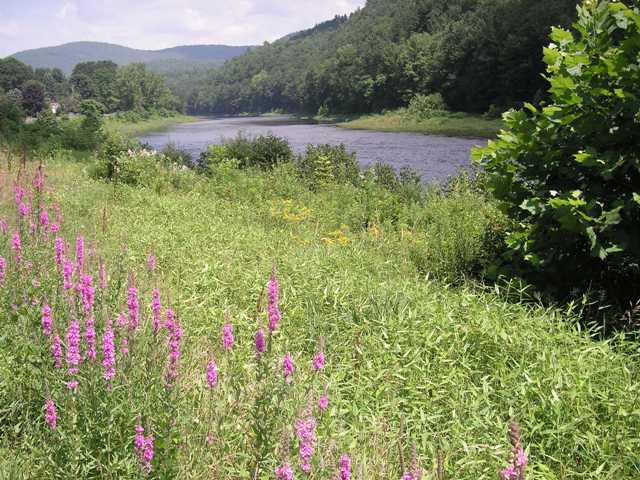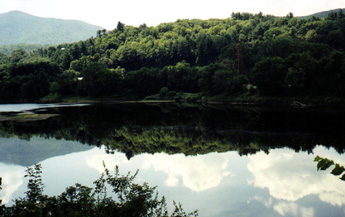|
Because this topic can get rather ugly, let's start with a pretty picture

Points to ponder:
- Recalling what we covered in the discussion of the scope of political science and the material on cleavage, in which we see that communities (groups, cities and towns, states as defined, and even the world community) are characterized by conflict, with people arranged into sides on the basis of one or more of several lines of cleavage, we now consider how one side can prevail over another, how some people secure the values they want to the detriment of those who have different values, how--to be blunt--one side wins
- To win in a conflict situation, people use power
- Power is defined by Robert Dahl (1956) as "A's ability to cause B to do what A wants him to do, even though B prefers something else"
- Look at Danziger’s discussion of power (Box 6.1, pp. 142-43)
- The definition is very similar to Dahl’s (I suspect that he was following Dahl) except that he does not explicitly say that the thing that B does is what A wants him to do
- As the following discussion of violence should make clear, force (“coercive power") is one means of applying power
- Other means of applying power will be discussed in the next topic, politics
- Exchange is one of the political means (though we use the term “bargaining”)
- “Mutuality” (or “integrative power”) seems, to me, to fit under the political means of persuasion
- Curiously, Danziger does not include a third political means we’ll discuss in the next topic, that is, voting
- As will be discussed in the next topic, there are political means (the use of politics) to resolve conflicts over values, specifically persuasion, bargaining, and voting
- In the next topic, we will set out a definition of politics as “the legitimated set of activities directed toward the making of binding decisions for any community”
- The possibility of distinguishing politics from violence is acknowledged by Danziger (326)
- The current topic, violence, is an alternative to politics for the resolution of conflicts
- Violence can be defined as the application of power through physical means, through physical force
- Examples of violence include
- Punching
- Shooting
- Stabbing
- Poisoning
- Applying electric shocks, say, to the genitals
- Exploding
- Garroting
- Hanging
- Crushing, perhaps by rolling someone over with a tank
- Drugging
- Defenestration
- Danziger (326) says that “the threat of violence might be understood as a form of violence” but I think this is problematical: if A has the means to use violence and B believes A will do so, then it is the means of violence, not A’s threat, that causes B to do what A wants him to do when B would prefer otherwise; or, to express it differently, a threat of violence is violence if there is the intent and the ability to use violence, but otherwise a threat is empty
- Suppose you are accosted by a mugger, who has a pistol to your back, and he says, “Your money or your life,” do you give him your money because of his gun or because of his threat?
- Suppose your bratty little brother says, “if you don’t change the channel so I can watch Barney, I’m going to hold my breath until I turn blue”—I suspect you’ll ignore him because, regardless of the threat, he will not be able to turn blue (and, really, who cares if he does?)
- Note Danziger’s taxonomy of violence (328), developing four categories of violence based on the agent (or source) and the target (categories which he elaborates through much of the rest of the chapter)
- Having explained how violence can be applied as a means of applying power so as to secure those scarce values one wants, the course could be over as soon as I explain the best techniques for using the garrote and once I explain what defenestration means, but it turns out that there are some “downsides” to the use of violence
- Violence is not pretty but painful and ugly (blood, guts)
- Violence is, by most accounts, morally objectionable, beneath us, inhumane
- Animals resolve conflict by using violence, but humans are “better” than animals
- Violence is risky because one is just as likely, or probably more likely, to lose values when violence is the means for resolving conflict than to win
- The only person in a community who should prefer the use of violence is the one with the biggest muscles and the biggest bag of tricks (electrical generator, pistols, grenades, high buildings with big windows, etc); and even this person may prefer to use some means other than violence because
- He always has to fear that someone with bigger muscles and more devices could enter the community in which case the former big winner loses all to the new guy
- He always has to fear that a group of community members combine together, trumping him with their individually smaller but collectively larger muscles and bags of tricks
- Because violence is painful and ugly, morally objectionable, and risky, most people most of the time look for an alternative and, as we shall see (and has already been foreshadowed), politics is an alternative to the use of violence as a way of applying power
- None of this is to say that violence is not used in resolving conflict, but rather to argue that most people most of the time choose to use politics first, and then, only if the benefits outweigh the costs, may they choose to use violence as a way of applying power
- Danziger (327) cites Hobbes on this point: politics is the prima ratio, violence may be the ultima ratio
Questions to consider:
- Any confusion as to why A’s applying power by means of violence might have the effect of causing B to do what A wants him to when B would otherwise have preferred to do something else?
- Why might “establishment violence” account for over 80% of deaths, and war less than 20% (Danziger: 329)?
- How does a rebellion differ from a revolution? How does a coup differ from a rebellion? How does a riot differ from a rebellion?
- What kinds of violence have we observed in Iraq since March 2003?
- Was the US War of Independence a revolution?
Assignment: Watch this excerpt from a new film, “If a Tree Falls,”
http://www.pbs.org/newshour/bb/environment/july-dec11/efp_09-01.html
and then we’ll engage in an online discussion on the question of whether McGowan is or is not a terrorist? Remember the “talking points.” The discussion, which is a graded exercise, begins immediately and runs through 9 am Monday 19 September.
|


